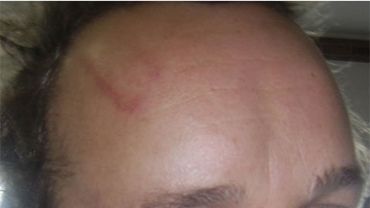Dr.Wheatgrass Treats: Sports and Soft Tissue Injury
Sports and Soft Tissue Injury
SPORTING INJURIES – FORGET THE ICE, USE WHEATGRASS
By Dr. Chris Reynolds. M.B.,B.S.
Recently I was in the change room at half-time at a local Highett Football Club game. Players were pressing plastic bags full of crushed ice against pulled muscles and bruises like security blankets. Knowing there was a better way, I wondered why ice is used at all for sports injuries. Ice does not stop bleeding either from the skin, the nose or from deeper tissues.
Researchers have shown that ice can cause inflammation and swelling in the deeper tissues which significantly slows recovery.(1) There also seems to be little agreement among experts about how long ice should be applied.(2) Ice, ethyl chloride spray and other coolants may numb the skin and perhaps relieve pain a little, but essentially they do little if anything to assist or hasten tissue recovery.
Yet it appears these rather primitive methods are all that’s available for emergency treatment of sports injuries. If they don’t stop the bleeding that predisposes to slow healing and recovery, then they shouldn’t be used. But what alternatives are there? Isn’t there SOMETHING that does a better job? Yes, wheatgrass does. Considering the enormous amount of playing and working time lost from sports injuries, not to mention the pain and disability they cause, it’s time the sporting world woke up to this strikingly superlative alternative treatment method.
How can wheatgrass be more effective than ice?
Let’s look at an example. The young footballer pictured below received a hefty boot to the head causing a massive bruise within minutes (Left). On the right is the bruise less than 24 hours later.


Saturday Night
Sunday Morning
All it required to achieve this stunning result was to smear some wheatgrass cream over the bruise. No ice or compression was applied. It is not necessary because wheatgrass penetrates the skin, stops the underlying bleeding and rapidly reduces swelling, often within 24 hours.
Any kind of injury can cause tissue damage. Blood vessels rupture and blood spreads into surrounding tissues causing inflammation and swelling. Pressure build-up then slows muscle, nerve and other tissue recovery.
So, the most important thing to do for any injury is STOP THE BLEEDING!
Blood in the tissues can do a lot of damage. The sooner wheatgrass is applied, the sooner the deep and surface bleeding stops, swelling is reduced and blood supply returns to the damaged tissue. Rapid recovery is the usual outcome.
Too good to be true? Not at all. I have used an extract of wheatgrass to treat numerous injuries since 1995. It is without doubt a powerful hemostatic agent i.e. it stops bleeding quickly. Blood noses, open wounds, bruises, sprained ankles, cuts, scratches, abrasions and deep tissue injuries such as corked, torn or pulled muscles – usually respond quickly to wheatgrass. I can understand your scepticism but I can assure you this is very real.
But how does it work?
Wheatgrass is an amazing healing agent, and soft tissue injury is just one of the conditions it works for. If you read the following basic scientific explanation for these phenomena, it all starts to make sense.
For years I have suggested that wheatgrass probably activates Growth Factors. These are small molecules that act as cell messengers to stimulate production by DNA of the numerous proteins required for the healing process. The immune system response, wound healing and stopping bleeding and absorption of blood clot are just a few of the functions vital to the maintenance and repair of damaged tissues mediated by Growth Factors.
I have researched the literature extensively since 1995 and made thousands of clinical observations (the head bruise shown above being a classic example) which strongly suggest that wheatgrass contains Growth Factor Activators. What they do is “kick start” and thereby facilitate the natural healing process resulting in faster healing than expected.
So remember, the top priority in treating sports and other traumatic injuries is to STOP THE BLEEDING AS QUICKLY AS POSSIBLE. If you play sport or have anything to do with managing sports injuries, I can guarantee that if you use wheatgrass, you will see a marked improvement in injury recovery time with reduced pain and swelling. Too good to be true? Not at all. Try it and see for yourself.
Some injuries that respond well to wheatgrass (perseverance pays)
• Pulled muscles (hamstrings, quadriceps, calf, loins, back)
• Groin injuries (osteitis pubis, adductor tendonitis), tennis elbow
• Blisters, abrasions, wounds, bruises, corks – heal in days, not weeks. Safe for open wounds.
• Muscle cramps
• Blood rule – stops capillary bleeding in a few minutes
• Shin splints
• Achilles tendinitis
• Runners knee
• Sprained ankle
• Sacro-iliac strain
• Plantar fasciitis
• Fracture pain
• Joint injuries and swelling
References:
1. Meeusen R, Lievens P. The use of cryotherapy in sports injuries. Sports Med. 1986 Nov-Dec;3(6):398-414
2. MacAuley, D. Do textbooks agree on their advice on ice? Clinical Journal of Sport Medicine. 11(2):67-72, April 2001.
